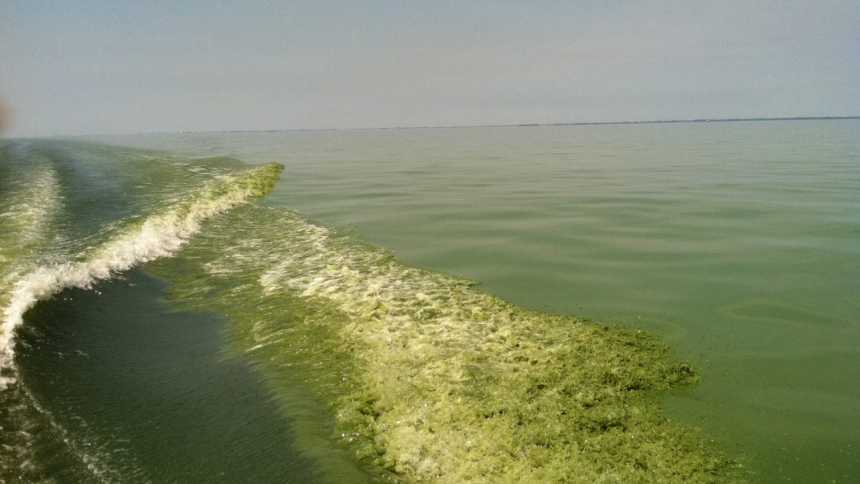NOAA: Lake Erie Annual Algal Bloom Could Be ‘Historically Bad’

Harmful algae bloom in Lake Erie. Photo credit: NOAA
If you are hoping there is any hope that harmful algal blooms will not occur in Lake Erie again this year, think again, reports The Press newspaper near Maumee, OH.
According to the National Oceanic and Atmospheric Association, 2015 looks to be the second worst year ever for HABs, based on a phosphorous load from the Maumee River that has already exceeded recommended target loads.
The NOAA, a federal agency, and its research partners, using an ensemble modeling approach, predict that the 2015 western Lake Erie bloom season will not only be among the most severe in recent years, it could become the second most severe behind the record-setting 2011 bloom.
While scientists say it could take five to ten years to receive the 40% reduction they are recommending, this year’s total phosphorous load from the Maumee is already at 1,586 tons, way over the 860 tons recommended to keep HABs in check. That does not include additional phosphorous that could load into the lake yet this year.
The scientists say the Maumee River’s spring load has proven to provide an accurate forecast based on model forecasts, and every tributary all of its tributaries in Northwest Ohio contribute. Scientists say the main point source for phosphorous loaded from the Maumee River originates with farm fertilizer and animal manure.
They add that the result of the phosphorous that feeds the cyanobacterial blooms include a higher cost for cities and local governments to treat their drinking water, as well as risk to swimmers in high concentration areas, and a nuisance to boaters when blooms form. These effects will vary in locations and severity with winds, and will peak in August or early September.
The scientists say the prediction does not necessarily mean Toledo’s drinking water will be deemed too toxic to drink like it was one weekend last August — measures have already been taken by the City of Toledo to treat water with additional soluble carbon to help eliminate the toxicity.
Tadd Nicholson, executive director of the Ohio Corn & Wheat Growers Association and Kirk Merritt, executive director of the Ohio Soybean Council, responded, “Grain farmers from around the state expressed concern today about the Lake Erie algae forecast. This issue affects all Ohioans and farmers will continue to demonstrate their commitment to continuous improvement by increasing conservation practices, investing in vital research and participating in ongoing educational programs.
Read the full report from The Press newspaper here.






